#Marshall County High School
Explore tagged Tumblr posts
Text
School gun report for the week of 11/26/23-12/2/23: Physician study says most school shooters get guns from home
11/27/23: Headline: Most school shootings aren’t mass killings, study finds, and they’re often driven by community violence While true, it shouldn’t lessen the severity of any shooting that takes place on school grounds. *** Headline: Study: Adolescent school shooters often use guns stolen from family This is a study from the American Academy of Pediatrics, and you read the headline…

View On WordPress
#Cincinnati#crime statistics#football#Houston#Kejuan Lucas#KIPP D.C. College Preparatory school#Marshall County High School#North College High School#Northside High School#ohio#reward#school shooting#Texas#Toledo#Washington D.C.#Whitmer High School
0 notes
Text
i would love to never see that gifset of carlos with the guns again. sorry like. perhaps i am simply too traumatized by the gun violence that has haunted my literal entire existence on this earth but. no.
#also i'm not kidding#i am younger than columbine#i was in the fifth grade when twenty elementary schoolers were killed at sandy hook#when i was a sophomore in high school two kids were killed by a fifteen year old in marshall county kentucky#the shooter called his mom and said there was a shooting and he was scared#he murdered his classmates with a poorly stored gun he brought from home#a month later 17 kids were murdered at marjory stoneman douglas high school#the shooter pulled a fire alarm#a couple months later an unscheduled fire alarm went off at my school#all of us sat there on the third floor of a possibly on fire building for a full forty seconds before evacuating#eventually the front office came over the intercom to tell us to evacuate#so forgive me for not thinking that carlos shooting a guy is cool or hot#tw gun violence#tw school shooting#just to be safe#y'all feel free to interact with this post but i'm turning reblogs off because i am not trying to start shit
5 notes
·
View notes
Text

On this day in 1992, Randy Weaver and his family were attacked by Federal law enforcement at their home on Ruby Ridge in Boundary County, Idaho. What began on that day would quickly become known as one of the most egregious examples of Federal police tyranny in the nation's history. 👇
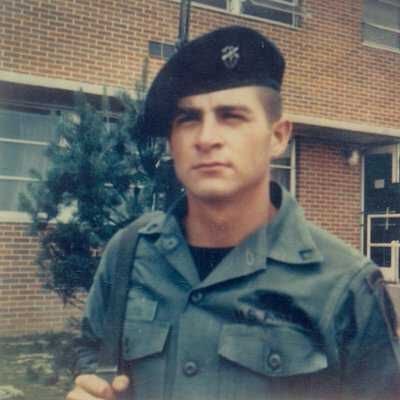
Randall Claude Weaver, who preferred to be called Pete as he hated his given name, was born in Villisca, Iowa to poor farming parents. One of four children, his family was extremely religious, though they often struggled to find a denomination that fit their beliefs. In 1968, Weaver dropped out of high school and enlisted in the US Military. 👇

While home on leave, he met his future wife, Victoria "Vicki" Jordison. In 1971, Weaver left the Army at the rank of Sergeant and a month later, he and Vicki were married. Randy quickly enrolled in Community College with the goal of becoming an FBI agent, but the high cost of tuition prevented him from completing school. He found work at the local John Deere factory while his wife became a homemaker as they began having children. 👇

Over time, they began developing a deeper and deeper distrust of the government, and Vicki began having "visions" that the Apocalypse was coming. The family decided their only option was to move off the grid. They spent time among the Amish, learning how to live without electricity. Then they emptied their life savings of $5000 to buy the small mountain property in northern Idaho. 👇
In 1984, their troubles began. Randy had a falling out with neighbor Terry Kinnison, over a $3,000 land deal. Kinnison lost the ensuing lawsuit and was ordered to pay Weaver an additional $2,100 in court costs and damages. Kinnison took his vengeance in letters written to the FBI, Secret Service, and county sheriff, claiming that Weaver had threatened to kill Pope John Paul II, President Ronald Reagan, and Idaho governor John Evans. 👇
Randy and Vicki Weaver were interviewed by the FBI, Secret Service, and the County Sheriff. Police were told that Weaver was a member of the white supremacist Aryan Nation and that he had a large gun collection in his cabin. Weaver denied the allegations, and no charges were filed. 👇
The Weavers filed an affidavit in 1985, claiming their enemies were plotting to provoke the FBI into killing them. The couple wrote a letter to President Reagan, claiming a threatening letter may have been sent to him, over a forged signature. No such letter ever materialized but, seven years later, prosecutors would cite the 1985 note as evidence of a Weaver family conspiracy against the government. 👇
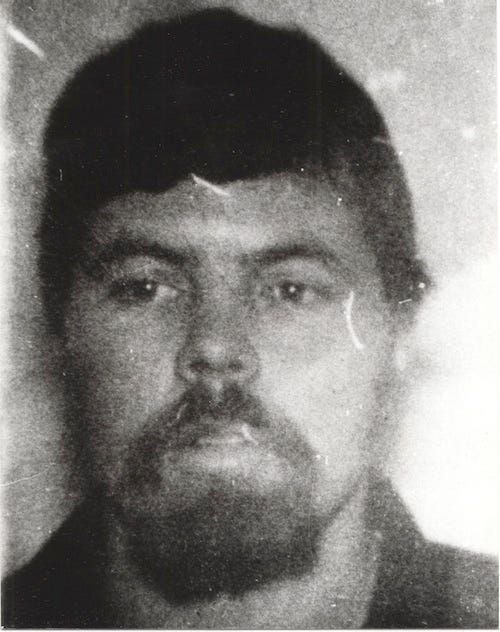
One of the Weaver's neighbors, Frank Kumnick, was a member of the Aryan Nation, and invited Randy to attend a World Aryan Congress in 1986. Unknown to either man was that Kumnick was already a target of the ATF. 👇
While at this "Congress", Weaver met a man posing as a gun dealer who was actually an undercover ATF agent. Randy invited this man to his home to discuss forming a resistance group against what they called the "Zionist Occupation Government". 👇
Later that same year, the ATF would charge Weaver with selling that informant two sawed-off shotguns. 👇
The ATF offered to drop all charges, as long as Randy was willing to become a confidential informant. Randy refused. The indictments came down shortly after, claiming that Randy was a "bank robber" with an extensive criminal history. These allegations were of course fabricated. However, Randy was still arrested and then released, pending trial. 👇
Trial was set for February 20, 1991 and subsequently moved to February 21, due to a federal holiday. Weaver’s parole officer sent him a letter, erroneously stating that the new date was March 20. A bench warrant was issued when Weaver failed to show in court, for the February date. Randy was, despite being completely unaware of it, officially labeled a fugitive from justice. 👇
The U.S. Marshals Service agreed to put off execution of the warrant until after the March 20 date, but the U.S. Attorney’s Office called a grand jury, a week earlier. It’s been said that a grand jury could indict a ham sandwich and the adage proved true, particularly when the prosecution failed to reveal parole officer Richins’ letter, with the March 20 date.
The episode fed into the worst preconceptions, of both sides. Marshalls developed a “Threat Profile” on the Weaver family and an operational plan: “Operation Northern Exposure”. Weaver, more distrustful than ever, was convinced that if he lost at trial, the government would seize his land and take his four children leaving Vicki, homeless. 👇
Federal surveillance of Ruby Ridge began. Marshalls attempted to negotiate over the following months, but Weaver refused to come out. Several people used as go-betweens, proved to be even more radical than the Weavers themselves. In a rare show of reason under the circumstances, Deputy Marshal Dave Hunt asked Weaver neighbor Bill Grider “Why shouldn’t I just go up there … and talk to him?” Grider replied, “Let me put it to you this way. If I was sitting on my property and somebody with a gun comes to do me harm, then I’ll probably shoot him.” 👇
On April 18, 1992, a helicopter carrying media figure Geraldo Rivera for the Now It Can Be Told television program was allegedly fired on, from the Weaver residence. Surveillance cameras then being installed by US Marshalls showed no such shots fired and Pilot Richard Weiss, denied the story. Even so, a lie gets around the world, before the truth can get its pants on. (Hat tip, Winston Churchill, for that bit of wisdom). The ‘shots fired narrative’ now became a media feeding frenzy. The federal government drew up ‘rules of engagement’👇
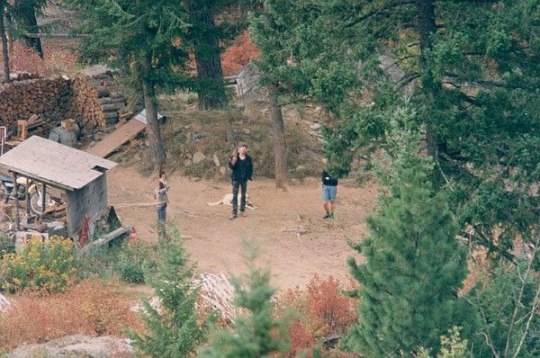
On August 21st, 1992, six Deputy US Marshalls entered the property to provide ground level reconnaissance and choose a spot to ambush and arrest Weaver. Deputy Marshall Art Roderick threw rocks at the cabin to see how the dogs would react. The cabin was at this time out of meat and, thinking the dog’s reaction may have been provoked by a game animal, Randy, a friend named Kevin Harris and Weaver’s 14-year-old son Samuel came out with rifles, to investigate. Vicki, Rachel, Sarah and baby Elisheba, remained in the cabin. 👇

When Striker discovered the team's locations, on of the Marshalls shot and killed the dog. This caused a brief firefight. By the time the shooting stopped, Deputy US Marshall William Degan had been shot and killed by Harris. Tragically, 14 year old Sammy was also dead, shot in the back by the Marshalls while trying to help his dog. 👇
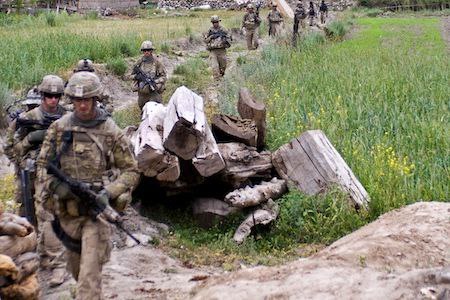
The situation quickly spiraled. The National Guard was called in, as well as SWAT teams and helicopters. The Weavers moved Sammy's body into a small shed near the main house, then retreated into the house. 👇
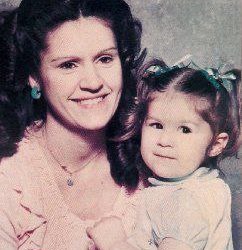
The next day, August 22nd, Weaver and his 16 year old daughter Sarah, along with Harris, left the main house to enter the shed Sammy's body lay. FBI sniper Lon Horiuchi fired from a position some 200 yards distant. The bullet tore into Weaver’s back and out his armpit. The three raced back to the cabin. Horiuchi’s second round entered the door as Harris dove for the opening, injuring him in the chest before striking Vicki in the face as she held baby Elisheba, in her arms. Vicki did not survive. 👇
Two days later, FBI Deputy Assistant Director Danny Coulson wrote the following memorandum, unaware that Vicki Weaver lay dead:
“Something to Consider
1. Charge against Weaver is Bull Shit.
2. No one saw Weaver do any shooting.
3. Vicki has no charges against her.
4. Weaver’s defense. He ran down the hill to see what dog was barking at. Some guys in camys shot his dog. Started shooting at him. Killed his son. Harris did the shooting [of Degan]. He [Weaver] is in pretty strong legal position.” 👇
The siege of Ruby Ridge would drag on for ten days. Kevin Harris was brought out on a stretcher on August 30, along with Vicki’s body. Randy Weaver emerged the following day. Subsequent trials acquitted Harris of all wrongdoing and Weaver of all but his failure to appear in court, for which he received four months and a $10,000 fine. 👇
In August 1995, the US government avoided trial on a civil lawsuit filed by the Weavers by awarding the three surviving daughters $1,000,000 each, and Randy Weaver $100,000 over the deaths of Sammy and Vicki Weaver. Randy would pass away on May 11, 2022, after a long illness.

The atrocity at Ruby Ridge would not be the end of the story. Six months later, many of the same agents would be involved at the siege of the Branch Davidian compound in Waco, Texas.
The story of the Weaver family and Ruby Ridge reminds us all that just wanting to be left alone is often not an option. The Federal government, in particular the FBI, ATF, and US Marshalls, used deception, outright lies, and terroristic tactics, all in an attempt to entrap a man who refused to become an informant against his neighbors. 👇
History is not what we were told. Everything is a fμ¢%in' lie. 🤔
Posted August 21, 2024
#pay attention#educate yourselves#educate yourself#knowledge is power#reeducate yourself#reeducate yourselves#think about it#think for yourselves#think for yourself#do your homework#do your research#do your own research#do some research#ask yourself questions#question everything#ruby ridge#history lesson#hidden history#history#lies exposed
513 notes
·
View notes
Text









vimeo
“Because the US government was not acting on mass shootings, we directly attacked a trait Americans are most known for: their pride in their country. Change the Ref created the Shamecards, a postcard collection designed to demand gun law reform from Congress. Subverting the traditional greeting cards that depict each city’s landmarks, ours show what cities are becoming known for.”
shamecards.org
There is 54 cards total representing:
Annapolis — Maryland: Capital Gazette Shooting
Atlanta — Georgia: Day Trading Firm Shootings
Benton — Kentucky: Marshall County High School Shooting
Bethel — Alaska: Regional High School Shooting
Binghamton — New York: Binghamton Shooting
Blacksburg — Virginia: Virginia Tech Massacre
Camden – New Jersey: Walk of Death Massacre
Charleston — South Carolina: Charleston Church Shooting
Charlotte — North Carolina: 2019 University Shooting
Cheyenne — Wyoming: Senior Home Shooting
Chicago — Illinois: Medical Center Shooting
Clovis — New Mexico: Clovis Library Shooting
Columbine — Colorado: Columbine
Dayton — Ohio: Dayton Shooting
Edmond — Oklahoma: Post Office Shooting
El Paso — Texas: El Paso Shooting
Ennis — Montana: Madison County Shooting
Essex Junction — Vermont: Essex Elementary School Shooting
Geneva — Alabama: Geneva County Massacre.
Grand Forks — North Dakota: Grand Forks Shooting
Hesston — Kansas: Hesston Shooting
Honolulu — Hawaii: First Hawaiian Mass Shooting
Huntington — West Virginia: New Year's Eve Shooting
Indianapolis — Indiana: Hamilton Avenue Murders
Iowa City — Iowa: University Shooting
Jonesboro — Arkansas: Middle School Massacre
Kalamazoo — Michigan: Kalamazoo Shooting
Lafayette — Louisana: Lafayette Shooting
Las Vegas — Nevada: Las Vegas Strip Shooting
Madison — Maine: Madison Rampage
Meridian — Mississippi: Meridian Company Shooting
Moscow — Idaho: Moscow Rampage
Nashville — Tennessee: Nashville Waffle House shooting
Newtown — Connecticut: Sandy Hook Elementary School Shooting
Omaha — Nebraska: Westroads Mall shooting
Orlando — Florida: Pulse Nightclub Shooting
Parkland — Florida: Parkland School Shooting
Pelham — New Hampshire: Wedding Shooting
Pittsburgh — Pennsylvania: Pittsburgh Synagogue Shooting
Prices Corner — Delaware: Delaware Shooting
Red Lake — Minnesota: Indian Reservation Shooting
Roseburg — Oregon: Umpqua Community Collage Shooting
Salt Lake City — Utah: Salt Lake City Mall Shooting
San Diego — California: San Ysidro Massacre
Santa Fe — Texas: Santa Fe School Shooting
Schofield — Wisconsin: Marathon County Shooting
Seattle — Washington: Capitol Hill Massacre
Sisseton — South Dakota: Sisseton Massacre
St. Louis — Missouri: Power Plant Shooting
Sutherland Springs — Texas: Sutherland Springs Church Shooting
Tucson — Arizona: Tocson Shooting
Wakefield — Massachusetts: Tech Company Massacre
Washington — D.C.: Navy Yard Shooting
Westerly — Rhode Island: Assisted-Living Complex Rampage
64 notes
·
View notes
Note
Donnie US Marshall revenge 🤭
Well gaddam, my babes! So many of you asked for it that I've decided to just give you what I've got. 😆 Thank you @discoscoob , @scarlettspectra , and the lovely Nonnie who asked!



warnings: mention past underage abuse, domestic abuse, mention police violence (this is a donnie fic, i assume you're not faint of heart here) Not a pro-Donnie fic.
You have to go back to your small town for the first time since you graduated high school, to bury your mother.
The first time Donnie Barksdale grabbed your ass, you were just 15. It was the first time he hit you too, because you were so startled you dumped hot fried chicken in his lap. He was your mom’s boyfriend, and he seemed to think that meant you came in the deal too.
There were times back then when you hated Donnie, and other times not so much. Like when he was kinda sweet, and would bring you a candy bar from the gas station, and you wished he wasn't so good looking because you knew what he was really like when he started drinking.
It was hard to understand why your mama put up with him, the way he whooped on her. He didn’t have a job and didn’t do anything around the house. You supposed Donnie’s knowledge of the location of the clitoris put him in high demand in your small town. It also didn't hurt that he was good looking as the devil himself, with a silver tongue to match.
After the funeral, you find that night being alone in the house where you grew up unsettles you. You decide to put on jeans and an oversize flannel– to hide the Glock at the small of your back. You put your badge in your pocket, not on your belt, and head to the local watering hole.
You sit by yourself for half an hour, nursing a vodka cranberry and watching the room out the corner of your eye, when he walks in. Tall and handsome as ever, shaggy in that mountain man way that still does not fail to make your treacherous pussy flutter, even while your head absolutely screams ‘danger!’
The sight of him just does something to you. Something unholy.
You’re not fifteen anymore, you have to remind yourself. He can’t bully you anymore, the way he’s bullied every woman in this town.
He glances your way, that sly sideways look that always reminded you of a lion on the plain. You know he recognizes you, from the way he pauses, but he goes to join his friends by the pool table who are already 3 sheets to the wind.
It takes about half an hour for him to strut over to you, taking the bar stool on your left like you’re old friends, and you don't remember what it was like to take his fist to the side of your face when you were still practically a child. “Well, well. As I live and breathe. Y/n’s finally come home.”
“Just here to bury Mama.”
“Heard about that. Sorry.”
You look him over. Your mother wasn’t much older than him, but drugs and alcohol had practically withered her to a husk until the last fix took her. Somehow, he looks fine as ever. Maybe he made a deal with the devil.
Maybe he is the devil.
“Thanks.”
You know he doesn’t mean it a lick. He was always more interested in her government draw check than your mother herself. Having a teenage girl at home didn’t hurt either.
You’d just turned sixteen, when he took your virginity in his truck at the county fair. He’d been on the edge of thirty.
You can hardly believe the balls on this man, when he pulls you in close with those long legs tangled in your barstool.
“How long you gonna be in town?”
“Just till tomorrow.”
“Aww, that ain’t no time at all. You should stick around, sugar. Remember the fun we used to have?”
It’s almost amusing to banter with him here, where you’re safe in a crowded room–and you’re armed.
“I was a child then, Donnie. I’m a woman now.”
He looks you up and down with those dark eyes that always could light a fire in your loins.
“Honey, I noticed. So what you been doin’ with yourself out in the big world? Heard you run off to join the army or some shit.”
He takes a sip of beer, and you clench your jaw.
“Marines, actually.”
He whistles at that. “Damn girl. You always were a tough cookie.” He leans in a little closer. “You ever think about me on a lonely night?”
“I dream about you all the time,” you admit, and your heart has started pounding in your chest. You do not mention that he is the star of your nightmares.
He gets that sly look that makes him look like a handsome snake. “Baby girl, do tell.”
“I dream about giving you a set of bracelets.”
He looks puzzled at that, and you suppress the urge to laugh. “Huh?”
“Steel ones.”
The look on his face is worth his weight in gold, when you take your badge from your pocket and set it on the bar between you. The silver star gleams in the low light, the embossed text proclaiming in a circle, UNITED STATES MARSHAL.
You’ve never seen Donnie Barksdale look scared before. You never knew it could feel this good.
“Are you threatening me?”
“Not yet. But what’s the sentence for statutory rape in Georgia? 20 years? You should probably leave me the fuck alone now.”
It’s possible this is the first time in his life that he’s been dismissed by a woman, and you can see in his eyes that he does not like it.
“Go on,” you egg him further, wiggling your fingers. “Shoo.”
He’s had enough to drink that he thinks it’s a good idea to grab you. But you’ve paid attention this whole time to the way he’s sitting on the edge of his stool, and it takes one good kick to send it out from under him, and Donnie sprawling on his back on the floor. Before he’s even pushed up on his elbows with murder in his eyes you are on your feet, and the Glock has materialized in your hand.
“You crazy bitch!”
“Motherfucker, did you think we were going to arm wrestle?” He juts those bottom teeth, grinding them back and forth the way he does when he’s really seeing red. You remember that look, and you realize a part of you hopes he’ll do something stupid.
“Second in my class at Glencoe, Donnie. You wanna try it?”
Though you know it kills him to do so, he lays back down, his head thunking on the wooden floor. “No ma’am,” he growls.
“Good.”
The whole room has gone quiet, staring at the two of you. The only sound is Waylon over the sound system, belting out about how there ain’t no good in an evil hearted woman.
You have a theory now that most every bad woman has had a worse man that drove them to it.
You lower your voice, even though you’re sure most everyone is straining to hear. “You wanna know what I learned out in the big world, Donnie?” You pause, but he gives no answer. “I learned there’s a whole ocean out there, and you are just one fucked up little fish in a tiny fucked up pond. Go to hell.”
You throw some cash on the bar, and you leave, knowing you’ll be seeing him sooner than later. The whole town will have heard about this by noon tomorrow, and a man with an ego like Donnie Barksdale’s can’t let it slide.
You’ll be ready. No man was ever more worth the paperwork for a justified homicide, than Donnie Barksdale.
47 notes
·
View notes
Text
The leader of the Choctaw Nation is joining an outpouring of support for the family of a 16-year-old student whose death is being investigated in Oklahoma.
Nex Benedict passed away on February 8, following a physical altercation at a high school the day prior. Chief Gary Batton confirmed that the young student’s mother is enrolled with the Choctaw Nation.
“The loss of a child is always difficult for a community and a family to accept,” Batton said in a statement on Wednesday.
“Although Nex does not appear to be affiliated with our tribe, their mother, Sue Benedict, is a registered member,” Batton continued. “Nex’s death weighs heavily on the hearts of the Choctaw people. We pray Nex’s family and their loved ones will find comfort,” Batton concluded.
Nex’s death has directed widespread attention to Oklahoma, where Republican officials have increasingly adopted policies hindering the rights and freedoms of Two Spirit and LGBTQ+ people. Sue Benedict has embraced her child’s gender identity and has vowed to donate funds to other youth experiencing some of the same struggles.
Two Spirit and LGBTQ+ advocates incorrectly identified Nex as being a citizen of the Cherokee Nation, whose reservation borders that of the Choctaw Nation. Cherokee Chief Hoskin Jr. expressed support for the Benedict family on Tuesday.
“As Chief, the health and welfare of all children within the Cherokee Nation Reservation is of concern,” Hoskin said in a statement.
Nex attended Owasso High School in Owasso, located on the Cherokee Reservation. Local authorities are investigating the death and have said they will forward the results of the investigation to prosecutors in Tulsa County for potential action.
Hoskin has offered the support of the Cherokee Nation Marshal Service as the investigation continues. The Owasso Police Department indicated in a statement on Tuesday that interviews would be taking place “over the course of the next two weeks.”
Oklahoma Gov. Kevin Stitt (R), a Republican who happens to be a citizen of the Cherokee Nation, has not spoken publicly about the death. He has repeatedly derided efforts to address diversity, equity and inclusion as discriminatory.
But a senior official with President Joe Biden, a Democrat, has weighed in. White House Press Secretary Karine Jean-Pierre offered a message of support from the administration in a post on social media.
“Every young person deserves to feel safe and supported at school,” Jean-Pierre wrote on her official government account. “Our hearts are with Nex Benedict’s family, their friends, and their entire school community in the wake of this horrific tragedy.”
“For many LGBTQI+ students across the country, this may feel personal and deeply painful,” Jean-Pierre continued. “There is always someone you can talk to if you’re going through a hard time. Dial 988 and press 3 to reach a counselor dedicated to serving LGBTQI+ young people.
According to the 2023 LGBTQ+ Youth Report, a project of Human Rights Campaign and the University of Connecticut, more than half of transgender and gender-expansive youth feel unsafe at school. In particular, nearly a third said they feel unsafe in school restrooms.
“All students, including trans and gender-expansive students like Nex, have the right to feel safe and protected while attending school,” Tori Cooper, the campaign director of Community Engagement for the Transgender Justice Initiative at the Human Rights Campaign, said in a statement on Wednesday. “That Nex was only 16 years old compounds this tragic injustice and they should have lived to see a fulfilling and authentic life.”
The 2023 study was based on a survey of nearly 3,000 LGBTQ+ youth ages 13-18 nationwide, according to the organization. Some 0.6 percent of respondents identified themselves as American Indian or Alaska Native.
According to Owasso Public Schools, a “physical altercation” took place in a bathroom at the high school on February 7. The Owasso police responded to a local hospital on the same day of the incident.
Police then said they were informed that a “juvenile” was taken back to a hospital on February 8, the same day as Nex’s passing.
#op#links#trans#non-binary#choctaw#nex benedict#oklahoma#transphobia#hate crime#murder#child death#transphobic violence#uspol#news#bad news
124 notes
·
View notes
Text
Jim Justice
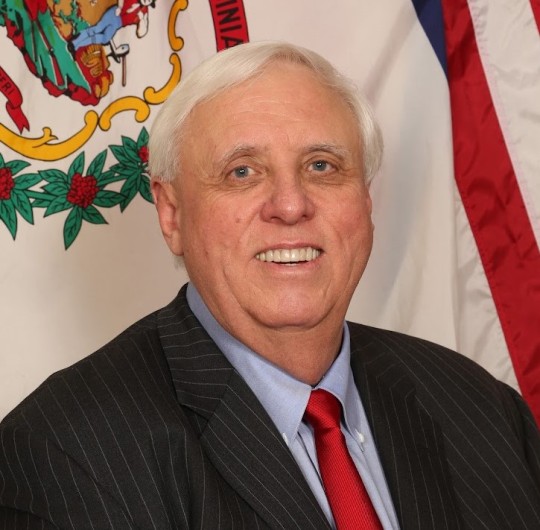
Physique: Heavyset Build Height: 6’ 7" (2.01 m)
James Conley Justice II (born April 27, 1951-) is an American businessman and politician who has served as the 36th governor of West Virginia since 2017. Justice was once a billionaire, but his net worth had declined to $513.3 million as of 2021. He inherited a coal mining business from his father and built a business empire with 94 companies, including the Greenbrier, a luxury resort in White Sulphur Springs.




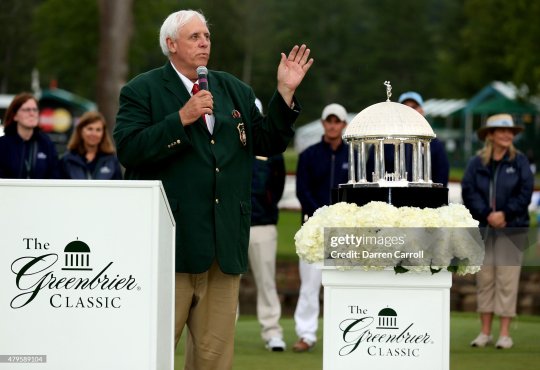
Justice is a well-liked and wealthy coal magnate who is one big fucking bear of a man. No other way to describe him. Hell… he compared himself to a grizzly bear. A 6-foot-7, 400+ pound millionaire grizzly bear. I’ll admit, I’m a little intimidated by the sheer size of him. But once I leave my goo on him, that’ll pass.
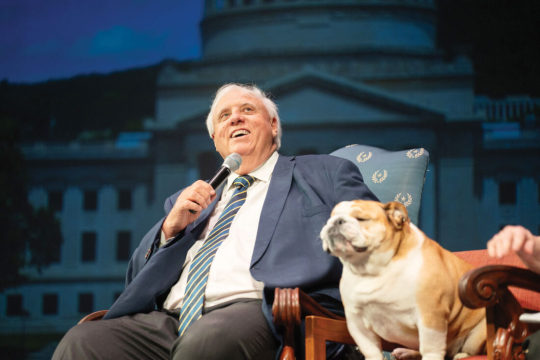
A lifelong West Virginian, he attended Raleigh County public schools and graduated from Woodrow Wilson High School in 1969, and attended Greenbrier Military Academy as a post-graduate. Governor Justice went on to Marshall University in Huntington, West Virginia, and was captain of the golf team for two years before earning his undergraduate degree and a Masters in Business Administration.




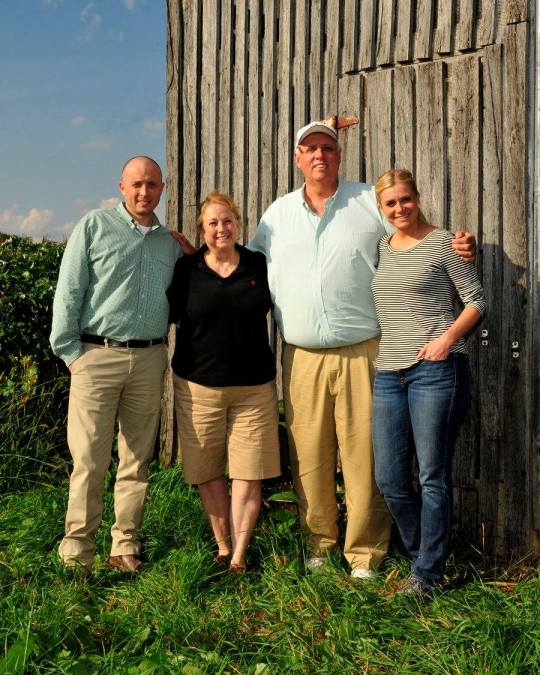
Justice married his high school sweetheart, having two adult children and spend time spoiling four grandchildren. In addition, they have three dogs: two Boston Terriers, and their famous Babydog, an English Bulldog. Plus, he coach girls' basketball. Not the most handsomest guy, but I'd love to fuck around with him for a weekend. And for some reason with his dog, Babydog watching.

31 notes
·
View notes
Text
Excerpt from this story from Inside Climate News:
Nestled beside traffic-choked New York Avenue NE, the historically Black Ivy City neighborhood in Washington, D.C., was built in the late 19th century as a community for African American laborers who soon found themselves living amid industrial sites and a racetrack.
Today, the neighborhood, like so many in D.C., is partially gentrified but can’t completely escape the environmental inequities of its past or the suffocating exhaust from traffic of present rush hours.
“A lot of us are experiencing issues with breathing,” said Sebrena Rhodes, an Advisory Neighborhood Commission member and organizer with the nonprofit Empower DC. “Everybody is experiencing the exact same thing.”
Ivy City is an archetypal “environmental justice” community in which residents have for years been disproportionately harmed by pollution, as a growing body of research makes clear.
A study published last month in the journal Nature Medicine by Assistant Professor Pascal Geldsetzer and other researchers and collaborators at the Stanford University School of Medicine found that Black Americans have had the highest proportion of deaths from fine particulate matter air pollution, known as PM2.5, when compared to all other racial or demographic subgroups from 1990 to 2016.
Fine particulate matter includes particles produced primarily through vehicle fuel emissions and other burning of oil, coal and wood that are less than 2.5 micrometers in diameter, small enough to lodge deeply in the lungs, affect other vital organs and even enter the bloodstream.
PM2.5, about one-thirtieth the diameter of a human hair, causes a range of harmful health effects, from aggravating asthma and other respiratory illnesses to increasing the risk of death from lung cancer, heart disease, dementia and stroke.
“It’s very well recognized that PM2.5 is the biggest environmental killer globally,” said Tarik Benmarhnia, associate professor at the University of California San Diego’s Scripps Institution of Oceanography and the study’s senior author.
Researchers found that Black Americans had the highest PM2.5-attributable mortality in 96.6 percent of U.S. counties and faced a “double jeopardy,” being more exposed to PM2.5 pollution and more susceptible to its adverse health effects due to poverty, existing medical conditions, more hazardous jobs and lack of access to housing and health care.
“Exposures to air pollutants, broadly, are not shared equally. They fall disproportionately on racial minorities throughout the U.S.,” said Marshall Burke, an associate professor at Stanford’s Doerr School of Sustainability and a co-author of the study.
12 notes
·
View notes
Text

Harry Tyson Moore (November 18, 1905 – December 25, 1951) was an educator, a pioneer leader of the civil rights movement, founder of the first branch of the NAACP in Brevard County, Florida, and president of the state chapter of the NAACP.
He was born in Houston, Florida to Johnny and Rosa Moore. He enrolled in a high school program at Florida Memorial College. He graduated from Florida Memorial College and accepted an elementary school teaching job in Cocoa, Florida.
He married Harriette Vyda Simms (1926) another teacher, and the couple had two daughters. He was promoted to principal of Titusville Colored School, where he taught ninth grade while supervising a staff of six teachers.
He filed a lawsuit to equalize African American and white teachers’ salaries in the state. Despite the support of the all-Black Florida State Teachers Association and renowned NAACP attorney Thurgood Marshall, Moore lost the lawsuit.
He organized the Florida State Conference of the NAACP and he organized the Progressive Voter League. His leadership of this organization led to the registration of 116,000 new black Florida registered voters. He became a full-time, paid organizer for the Florida NAACP. He and his wife had been fired from their teaching jobs because of their civil rights activities.
In July 1949, four young black men, Ernest Thomas, Charles Greenlee, Samuel Shepherd, and Walter Irvin were accused of raping a white teenager, 17-year-old Norma Padgett, in Lake County, Florida. When Thomas was killed by County Sheriff Willis McCall, he publicly called for him to be arrested for murder.
On December 25, 1951, they were celebrating their twenty-fifth wedding anniversary, when a bomb that had been planted under their home exploded. He died on his way to the hospital, and she died nine days later. Their deaths led to protests across the nation. It was discovered that four high-ranking Florida kkk members, Earl J. Brooklyn, Tillman H. Belvin, Joseph N. Cox, and Edward L. Spivey, planted the bomb under the couple’s home. By the time the evidence was uncovered, the men were deceased. #africanhistory365 #africanexcellence
3 notes
·
View notes
Text
Daniel Villarreal at LGBTQ Nation:
Gavin Grimm, the now-25-year-old trans man who made headlines for suing his Virginia school district over its transphobic bathroom policies, is struggling with mental health challenges, poverty and looming homelessness, according to The Guardian. Grimm sued the district after the Gloucester County School Board voted to ban him as a 15-year-old from using the boys’ bathrooms, even though he had already been doing so for months without incident. After years of litigation, he eventually won a landmark federal decision asserting the constitutional right to protection against educational discrimination.
But even though the school district ended up settling Grimm’s case for $1.3 million in legal fees��and other legal costs, the settlement didn’t provide him with stable housing or financial security. He only received $1 as a symbolic share of the settlement. To settle for personal damages, Grimm would have had to have given the school district’s lawyers access to medical records showing the impacts of the school’s discrimination on his health. After years of court battles, he didn’t like enduring another fight. As his court victories mounted, Grimm gained notoriety: Trans actress Laverne Cox told people to Google him at the Grammys, Whoopi Goldberg interviewed him on The View, and in 2017, he served as the grand marshal for New York City’s Pride parade. But he hasn’t been invited to any paid appearances as the LGBTQ+ community’s focus has largely moved on to others.
“I’m someone who has had worldwide visibility. I represent an outer crust of privilege most people will never see, and I cannot make ends meet no matter how hard I try,” he told The Guardian. He is one of the 8% of trans adults who have gone unsheltered over the last year. Grimm now suffers from complex post-traumatic stress disorder and stress-induced seizures in addition to having autism which affects his sensory processing. In May 2021, he spent four days in a coma after a grand mal seizure which seriously impaired his ability to work or drive. Combined, these have prevented him from keeping a job or finishing higher education, even though a generous benefactor helped fund it. “The PTSD at its core is about not being safe or understood, being rejected, and the adults in my life not acting responsibly,” he said. “In high school, I was picked over and hyper-analyzed. I was tortured, harassed and bullied.” While he receives some financial support from disability payments, his mother, and an ongoing GoFundMe crowdfunding campaign, he recently moved out of his apartment in Newport News, Virginia.
His mother has begun caring for his 19-year-old cat Rascal, but Grimm has begun couch-surfing with friends, occasionally staying with his mother, and spending some nights at a local dog park. He avoids houseless shelters, fearful of discrimination.
Trans male Gavin Grimm, who won his bathroom lawsuit, is now struggling with homelessness and mental disabilities.
See Also:
The Guardian: Gavin Grimm won a landmark victory for US trans youth. He now struggles to survive
#Gavin Grimm#Transgender#Homelessness#LGBTQ+#Transgender Rights#G.G. v. Gloucester County School Board#Gloucester County School Board#School Boards#Disabilities
5 notes
·
View notes
Text

L. Glenn Switzer Contractor 1930 (Photo taken April 29, 2024 on Glenalbyn Dr. & Glenmuir Ave.)
According to the Los Angeles Times, L. Glenn Switzer died at the age of 96 on July 11, 1990, so he was born in either 1894 or 1893. He started "the first ready-mix concrete company in Southern California" in Pasadena in 1930. The company, Transit Mixed Concrete Co., worked "at construction sites throughout Los Angeles, Orange, Riverside, San Bernardino and Imperial counties," in addition to manufacturing concrete blocks and panels. He was a Quaker and was "president of the national Conference of Quaker Men" in 1954" ("L. Glenn Switzer; Formed Ready-Mix Concrete Firm." Los Angeles Times, July 22, 1990.

In 1941, L. Glenn Switzer was the manager of Transit Mixed Concrete Co. They had multiple locations including 1000 North La Brea in Los Angeles, 3492 E Foothill Blvd. in Pasadena, and 780 Union Pacific Place, which doesn't currently exist but I think may be in Commerce, CA (Los Angeles City Directory 1941, Los Angeles City Directory Co., 1941).
In an advertisement in 1945, Transit Mixed Concrete Co described themselves as "Pioneers of Transit-Mixed Concrete in Southern California" (Southwest Builder and Contractor, Volume 106, F. W. Dodge Company, 1945).
According to Switzer v. Commissioner of Internal Revenue, United States Tax Court, June 30, 1953, 20 T.C. 759 (U.S.T.C. 1953), L. Glenn Switzer and Howard A. Switzer were partners in the company in 1944-45. Their respective wives were Ida H. and Florence M. Apparently they didn't commit fraud with intent to evade tax, but the husbands were deficient due to negligence.
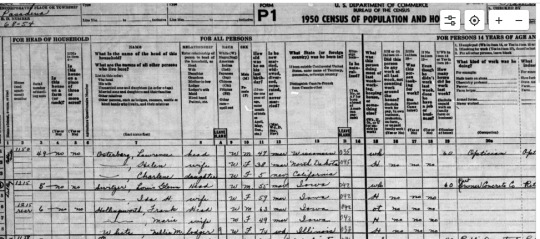
We learn from Find a Grave that L. was Lewis. He was born in Iowa in on June 26, 1894 and died in L.A. County on July 11, 1990. He is buried in Mountain View Cemetery and Mausoleum in Altadena, CA. His wife, Ida, was born in Iowa and they married on December 29, 1915 in Marshall, Iowa. They had at least two sons (Elmo Glenn, Eugene Lewis) and one daughter (Mayme Elizabeth). She lived in Pasadena in the 1940 and 1950 censuses. She died on October 18, 1987 and was also buried in Mountain View Cemetery and Mausoleum in Altadena, CA.

Howard Allison Switzer was Lewis's brother (they also had four other siblings: Elias Claire, Gladys Lucile, Richard Kent, and Florence Eliza) and co-founder. He was born on July 30 or 31, 1908 in Ladora, Iowa and died on January 7, 1997 in Los Angeles, CA. He is also buried at Mountain View Cemetery and Mausoleum in Altadena, CA (Find a Grave). Their parents were Richard Martin Switzer and Carrie Estella Lewis. (The photo above is Howard in the 1920s, probably in Long Beach, CA, and was submitted to Find a Grave by 'jmb'.) According to his obituary in the Los Angeles Times, he had moved to Long Beach, CA in 1920 with his parents and sister. "He joined his father and older brother in their concrete contracting company after graduating from Long Beach High School." This company was a predecessor to Transit Mix Concrete Company, which, according to the same obituary, was "credited with using the first concrete mixer trucks, which prepare the concrete to be poured once it gets to the job site" (January 9, 1997). Howard moved to Pasadena in 1932 and married Florence.
She lived to 105 and had lived her whole life in Pasadena, CA! They had four sons: Forrest, Roy, Marshall, and Norman. She was "known as Flossie to most of her friends." ("Florence Switzer Obituary," Pasadena Star-News).
Other sources:
The Tax Fortnighter Annual, Fallon Publications, 1954
2 notes
·
View notes
Photo

The Broomstick Killer
Kenneth Allen McDuff was born at 201 Linden Street in the central Texas town of Rosebud, the fifth of six children born to John Allen "JA" and Addie McDuff. At Rosebud High School, McDuff earned the reputation of being a bully. He was careful to pick on weaker individuals after the large but not strong McDuff lost a fight he had picked with an athletic and popular boy named Tommy Sammons. As a result, he quit school and worked for his father's business doing manual labor. McDuff would often brag in later interviews that old ladies loved the way he mowed their lawns, making others jealous. McDuff was convicted of a series of burglaries and put in prison.
On August 6, 1966, McDuff and Green, whom he had met around a month earlier through a mutual acquaintance, spent the day pouring concrete for McDuff's father. They then drove around, as McDuff said he was looking for a girl. At 10 pm, Robert Brand (aged 17), his girlfriend Edna Louise Sullivan (aged 16), and Brand's 15-year-old cousin Mark Dunman were standing beside their parked car on a baseball field in Everman, Texas. While cruising around, McDuff noticed Sullivan and parked around 150 yards away from the soon-to-be victims. He threatened the trio with his .38 Colt revolver and ordered them to get into the trunk of their car. With Green following in McDuff's car, McDuff drove the victims' Ford along a highway and then into a field, where he ordered Sullivan out of the trunk of the Ford and instructed Green to put her into the trunk of his Dodge Coronet. At this point, according to Green's statement, McDuff said he would have to "knock 'em off"; he proceeded to fire six shots into the trunk of the Ford in spite of Dunman and Brand's pleas not to. McDuff then instructed Green to wipe the fingerprints off the Ford.
After driving to another location, McDuff and Green, the latter allegedly under duress, raped Sullivan. After she was raped repeatedly, McDuff asked Green for something with which to strangle her. Green gave him his belt. However, in the end, McDuff opted to use a 3-foot-long (0.91 m) piece of broomstick from his car. He choked Sullivan, and then Green and he dumped her body in some bushes. They purchased Coca-Cola from a Hillsboro gas station before driving to Green's house to spend the night. The following day, McDuff buried his revolver beside Green's garage, and their mutual acquaintance Richard Boyd allowed McDuff to wash his car at his house. The next day, Green confessed to Boyd's parents, who told Green's mother, who convinced him to turn himself in. McDuff was arrested by Falls County Sheriff Brady Pamplin (who served with Texas Rangers before serving in World War II with United States Army Air Corps) and Deputy U.S. Marshal Thomas Parnell “T.P.” McNamara, Sr.
McDuff received a death sentence in Texas' electric chair; Green received a 25-year sentence and was released in 1979. McDuff's death sentence was commuted to a life sentence, and he hired a lawyer, who amassed a dossier of various evidence that claimed to show that Green was the real killer. Some members of the parole board were impressed by the dossier. During a one-on-one interview with a board member, McDuff offered him a bribe to secure a favorable decision on the parole application. He was given a two-year sentence for trying to bribe the official. It proved meaningless, as board members thought McDuff could still "contribute to society" and decided to grant him a parole. He was released in 1989.
McDuff was one of 20 former death-row inmates and 127 murderers to be paroled. After being released, he got a job at a gas station making $4 an hour while taking a class at Texas State Technical College in Waco. Within three days of his release, he is widely believed to have begun killing again. The body of 29-year-old Sarafia Parker was discovered on October 14, 1989, in Temple, a town 48 miles south of Waco along the I-35 corridor. McDuff was not charged with this crime. However, he was soon returned to prison on a parole violation for making death threats to an African American youth in Rosebud.
Addie McDuff paid $1,500, plus an additional $700 for expenses, to two Huntsville attorneys in return for their "evaluating" her son's prospect of release. On December 18, 1990, McDuff was again released from prison. On the night of October 10, 1991, he picked up a prostitute named Brenda Thompson in Waco. He tied her up, but then stopped his truck about 50 ft from a police checkpoint. When a policeman walked toward McDuff's vehicle, Thompson repeatedly kicked at the windshield of McDuff's truck, cracking it several times.
McDuff accelerated very quickly and drove at the officers. According to a statement filed by the officers later, three of them had to jump to avoid being hit. The policemen gave chase, but McDuff eluded them by turning off his lights and traveling the wrong way down one-way streets. Ultimately, he parked his truck in a wooded area near U.S. Route 84 and tortured Thompson to death. Her body was not discovered until 1998.
Five days later, on October 15, 1991, McDuff and a 17-year-old prostitute named Regenia DeAnne Moore were witnessed having an argument at a Waco motel. Shortly thereafter, the pair drove in McDuff's pickup truck to a remote area beside Texas State Highway 6, near Waco. McDuff tied her arms and legs with stockings before killing her. She had been missing from home for 7 years by the time her body was discovered on September 29, 1998. McDuff is also believed to have murdered Cynthia Renee Gonzalez, 23, who was found dead in a creek bed near County Road 313 in heavily wood terrain 1 mile west of I-35 on September 21, 1991, some six days after she was reported missing in Arlington.[4]
McDuff and an accomplice, Alva Hank Worley, murdered Colleen Reed, a Louisiana native, on December 29, 1991. McDuff and Worley drove to an Austin car wash and kidnapped Reed in plain sight of eyewitnesses before driving away. Worley admitted in an April 1992 interview with the Bell County Sheriff's Department that he had raped Reed and tortured her with cigarettes, but he stated that he did not participate in her murder.
McDuff's next victim was Valencia Joshua, a prostitute who was last seen alive knocking on McDuff's door. He strangled Joshua on February 24, 1992. Her body was discovered on March 15 at a golf course near their college. Next was Melissa Northrup, a 22-year-old store clerk at a Waco Quik-Pak (the same store that McDuff had worked in at one point), who was pregnant when she went missing from the store. The kidnapper also took $250 from the cash register. McDuff was a suspect because he had been seen in the vicinity of the Quik-Pak at the time of Northrup's disappearance. During the investigation before the body was found, a college friend of McDuff's told police officers that he had attempted to enlist his help in robbing the store. Northrup died on March 1, 1992, and a fisherman found her body on April 26.
A major problem for investigators was that McDuff's post-release victims were spread out across several Texas counties. This made a single coordinated investigation difficult. However, the police learned that McDuff was peddling drugs and had an illegal firearm, both federal offenses. Consequently, on March 6, 1992, a local state attorney issued a warrant for his arrest. In April 1992, Bell County investigators had brought in Worley for questioning on the basis that he was a known acquaintance of McDuff's. Worley admitted to his involvement in the kidnapping of Reed. He was held in a Travis County jail while the police continued their search for McDuff.
McDuff had moved to Kansas City, Missouri, where he was working at a refuse collection company and living under the assumed name of Richard Fowler. On May 1, 1992, a coworker of his named Gary Smithee watched the Fox television program America's Most Wanted. Smithee noticed how similar McDuff, who was featured on the program, was to his new co-worker. After discussing the matter with another co-worker, Smithee telephoned the Kansas City Police Department, which searched Fowler's name and found he had been arrested and fingerprinted for soliciting prostitutes. A comparison of the fingerprints taken from Fowler to those of McDuff showed they were the same. On May 4, 1992, a surveillance team of six officers arrested McDuff as he drove to a landfill south of Kansas City.
On February 18, 1993, the jury, in a special punishment hearing, opted to sentence him to death. Following a number of delays while appeals were heard, the Western District Court denied habeas corpus relief and rescheduled the execution date for November 17, 1998. As he was denied authorization for another, he gave up Reed's burial location a few weeks before his execution.
21 notes
·
View notes
Link
Students from Universidad Católica Boliviana prepare to traverse the course at the 2024 Human Exploration Rover Challenge at the U.S. Space & Rocket Center in Huntsville, Alabama, near NASA’s Marshall Space Flight Center.Credits: NASA/Taylor Goodwin NASA announced the winners of the 30th Human Exploration Rover Challenge (HERC) April 22, with Parish Episcopal School, from Dallas, winning first place in the high school division, and the University of Alabama in Huntsville, capturing the college/university title. The annual engineering competition – one of NASA’s longest standing challenges – held its concluding event April 19 and April 20, at the U.S. Space & Rocket Center in Huntsville, Alabama, near NASA’s Marshall Space Flight Center. The complete list of 2024 award winners is provided below: High School Division First Place: Parish Episcopal School, Dallas Second Place: Academy of Arts, Careers and Technology, Reno, Nevada Third Place: Escambia High School, Pensacola, Florida College/University Division First Place: University of Alabama in Huntsville Second Place: Instituto Tecnológico de Santo Domingo, Dominican Republic Third Place: Campbell University, Buies Creek, North Carolina Ingenuity Award University of West Florida, Pensacola, Florida Phoenix Award High School Division: East Central High School, Moss Point, Mississippi College/University Division: North Dakota State University, Fargo, North Dakota Task Challenge Award High School Division: Erie High School, Erie, Colorado College/University Division: South Dakota School of Mines and Technology, Rapid City, South Dakota Project Review Award High School Division: Parish Episcopal School, Dallas College/University Division: University of Alabama in Huntsville Featherweight Award Rhode Island School of Design, Providence, Rhode Island Safety Award High School Division: NPS International School, Singapore College/University Division: Instituto Especializado de Estudios Superiores Loyola, San Cristobal, Dominican Republic Crash and Burn Award KIET Group of Institutions, Delhi-NCR, India Jeff Norris and Joe Sexton Memorial Pit Crew Award High School Division: Erie High School, Erie, Colorado College/University Division: Campbell University, Buies Creek, North Carolina Team Spirit Award Instituto Tecnológico de Santo Domingo, Dominican Republic Most Improved Performance Award High School Division: Jesco von Puttkamer School, Leipzig, Germany College/University Division: Universidad Católica Boliviana – San Pablo, La Paz, Bolivia Social Media Award High School Division: Bledsoe County High School, Pikeville, Tennessee College/University Division: Universidad de Piura, Peru STEM Engagement Award High School Division: Princess Margaret Secondary School, Surrey, British Columbia College/University Division: Trine University, Angola, Indiana Artemis Educator Award Sadif Safarov from Istanbul Technical University, Turkey Rookie of the Year Kanakia International School, Mumbai, India More than 600 students with 72 teams from around the world participated as HERC celebrated its 30th anniversary as a NASA competition. Participating teams represented 42 colleges and universities and 30 high schools from 24 states, the District of Columbia, Puerto Rico, and 13 other nations from around the world. Teams were awarded points based on navigating a half-mile obstacle course, conducting mission-specific task challenges, and completing multiple safety and design reviews with NASA engineers. “This student design challenge encourages the next generation of scientists and engineers to engage in the design process by providing innovative concepts and unique perspectives,” said Vemitra Alexander, HERC activity lead for NASA’s Office of STEM Engagement at Marshall. “While celebrating the 30th anniversary of the challenge, HERC also continues NASA’s legacy of providing valuable experiences to students who may be responsible for planning future space missions including crewed missions to other worlds.” HERC is one of NASA’s eight Artemis Student Challenges reflecting the goals of the Artemis program, which seeks to land the first woman and first person of color on the Moon while establishing a long-term presence for science and exploration. NASA uses such challenges to encourage students to pursue degrees and careers in the fields of science, technology, engineering, and mathematics. HERC is managed by NASA’s Southeast Regional Office of STEM Engagement at Marshall. Since its inception in 1994, more than 15,000 students have participated in HERC – with many former students now working at NASA, or within the aerospace industry. To learn more about HERC, please visit: https://www.nasa.gov/roverchallenge/home/index.html -end- Gerelle DodsonNASA Headquarters, [email protected] Taylor Goodwin Marshall Space Flight Center, Huntsville, Ala. [email protected] Share Details Last Updated Apr 22, 2024 LocationNASA Headquarters Related TermsSTEM Engagement at NASAArtemisGet InvolvedMarshall Space Flight CenterOpportunities For Students to Get InvolvedPrizes, Challenges & Crowdsourcing
2 notes
·
View notes
Text

The Broomstick Killer
Kenneth Allen McDuff was born at 201 Linden Street in the central Texas town of Rosebud, the fifth of six children born to John Allen "JA" and Addie McDuff. At Rosebud High School, McDuff earned the reputation of being a bully. He was careful to pick on weaker individuals after the large but not strong McDuff lost a fight he had picked with an athletic and popular boy named Tommy Sammons. As a result, he quit school and worked for his father's business doing manual labor. McDuff would often brag in later interviews that old ladies loved the way he mowed their lawns, making others jealous. McDuff was convicted of a series of burglaries and put in prison.
On August 6, 1966, McDuff and Green, whom he had met around a month earlier through a mutual acquaintance, spent the day pouring concrete for McDuff's father. They then drove around, as McDuff said he was looking for a girl. At 10 pm, Robert Brand (aged 17), his girlfriend Edna Louise Sullivan (aged 16), and Brand's 15-year-old cousin Mark Dunman were standing beside their parked car on a baseball field in Everman, Texas. While cruising around, McDuff noticed Sullivan and parked around 150 yards away from the soon-to-be victims. He threatened the trio with his .38 Colt revolver and ordered them to get into the trunk of their car. With Green following in McDuff's car, McDuff drove the victims' Ford along a highway and then into a field, where he ordered Sullivan out of the trunk of the Ford and instructed Green to put her into the trunk of his Dodge Coronet. At this point, according to Green's statement, McDuff said he would have to "knock 'em off"; he proceeded to fire six shots into the trunk of the Ford in spite of Dunman and Brand's pleas not to. McDuff then instructed Green to wipe the fingerprints off the Ford.
After driving to another location, McDuff and Green, the latter allegedly under duress, raped Sullivan. After she was raped repeatedly, McDuff asked Green for something with which to strangle her. Green gave him his belt. However, in the end, McDuff opted to use a 3-foot-long (0.91 m) piece of broomstick from his car. He choked Sullivan, and then Green and he dumped her body in some bushes. They purchased Coca-Cola from a Hillsboro gas station before driving to Green's house to spend the night. The following day, McDuff buried his revolver beside Green's garage, and their mutual acquaintance Richard Boyd allowed McDuff to wash his car at his house. The next day, Green confessed to Boyd's parents, who told Green's mother, who convinced him to turn himself in. McDuff was arrested by Falls County Sheriff Brady Pamplin (who served with Texas Rangers before serving in World War II with United States Army Air Corps) and Deputy U.S. Marshal Thomas Parnell “T.P.” McNamara, Sr.
McDuff received a death sentence in Texas' electric chair; Green received a 25-year sentence and was released in 1979. McDuff's death sentence was commuted to a life sentence, and he hired a lawyer, who amassed a dossier of various evidence that claimed to show that Green was the real killer. Some members of the parole board were impressed by the dossier. During a one-on-one interview with a board member, McDuff offered him a bribe to secure a favorable decision on the parole application. He was given a two-year sentence for trying to bribe the official. It proved meaningless, as board members thought McDuff could still "contribute to society" and decided to grant him a parole. He was released in 1989.
McDuff was one of 20 former death-row inmates and 127 murderers to be paroled. After being released, he got a job at a gas station making $4 an hour while taking a class at Texas State Technical College in Waco. Within three days of his release, he is widely believed to have begun killing again. The body of 29-year-old Sarafia Parker was discovered on October 14, 1989, in Temple, a town 48 miles south of Waco along the I-35 corridor. McDuff was not charged with this crime. However, he was soon returned to prison on a parole violation for making death threats to an African American youth in Rosebud.
Addie McDuff paid $1,500, plus an additional $700 for expenses, to two Huntsville attorneys in return for their "evaluating" her son's prospect of release. On December 18, 1990, McDuff was again released from prison. On the night of October 10, 1991, he picked up a prostitute named Brenda Thompson in Waco. He tied her up, but then stopped his truck about 50 ft from a police checkpoint. When a policeman walked toward McDuff's vehicle, Thompson repeatedly kicked at the windshield of McDuff's truck, cracking it several times.
McDuff accelerated very quickly and drove at the officers. According to a statement filed by the officers later, three of them had to jump to avoid being hit. The policemen gave chase, but McDuff eluded them by turning off his lights and traveling the wrong way down one-way streets. Ultimately, he parked his truck in a wooded area near U.S. Route 84 and tortured Thompson to death. Her body was not discovered until 1998.
Five days later, on October 15, 1991, McDuff and a 17-year-old prostitute named Regenia DeAnne Moore were witnessed having an argument at a Waco motel. Shortly thereafter, the pair drove in McDuff's pickup truck to a remote area beside Texas State Highway 6, near Waco. McDuff tied her arms and legs with stockings before killing her. She had been missing from home for 7 years by the time her body was discovered on September 29, 1998. McDuff is also believed to have murdered Cynthia Renee Gonzalez, 23, who was found dead in a creek bed near County Road 313 in heavily wood terrain 1 mile west of I-35 on September 21, 1991, some six days after she was reported missing in Arlington.[4]
McDuff and an accomplice, Alva Hank Worley, murdered Colleen Reed, a Louisiana native, on December 29, 1991. McDuff and Worley drove to an Austin car wash and kidnapped Reed in plain sight of eyewitnesses before driving away. Worley admitted in an April 1992 interview with the Bell County Sheriff's Department that he had raped Reed and tortured her with cigarettes, but he stated that he did not participate in her murder.
McDuff's next victim was Valencia Joshua, a prostitute who was last seen alive knocking on McDuff's door. He strangled Joshua on February 24, 1992. Her body was discovered on March 15 at a golf course near their college. Next was Melissa Northrup, a 22-year-old store clerk at a Waco Quik-Pak (the same store that McDuff had worked in at one point), who was pregnant when she went missing from the store. The kidnapper also took $250 from the cash register. McDuff was a suspect because he had been seen in the vicinity of the Quik-Pak at the time of Northrup's disappearance. During the investigation before the body was found, a college friend of McDuff's told police officers that he had attempted to enlist his help in robbing the store. Northrup died on March 1, 1992, and a fisherman found her body on April 26.
A major problem for investigators was that McDuff's post-release victims were spread out across several Texas counties. This made a single coordinated investigation difficult. However, the police learned that McDuff was peddling drugs and had an illegal firearm, both federal offenses. Consequently, on March 6, 1992, a local state attorney issued a warrant for his arrest. In April 1992, Bell County investigators had brought in Worley for questioning on the basis that he was a known acquaintance of McDuff's. Worley admitted to his involvement in the kidnapping of Reed. He was held in a Travis County jail while the police continued their search for McDuff.
McDuff had moved to Kansas City, Missouri, where he was working at a refuse collection company and living under the assumed name of Richard Fowler. On May 1, 1992, a coworker of his named Gary Smithee watched the Fox television program America's Most Wanted. Smithee noticed how similar McDuff, who was featured on the program, was to his new co-worker. After discussing the matter with another co-worker, Smithee telephoned the Kansas City Police Department, which searched Fowler's name and found he had been arrested and fingerprinted for soliciting prostitutes. A comparison of the fingerprints taken from Fowler to those of McDuff showed they were the same. On May 4, 1992, a surveillance team of six officers arrested McDuff as he drove to a landfill south of Kansas City.
On February 18, 1993, the jury, in a special punishment hearing, opted to sentence him to death. Following a number of delays while appeals were heard, the Western District Court denied habeas corpus relief and rescheduled the execution date for November 17, 1998. As he was denied authorization for another, he gave up Reed's burial location a few weeks before his execution.
8 notes
·
View notes
Text
Colin Masterson

Who is the Cook County State's Attorney?
Colin David Masterson
The oldest of the two Masterson brothers, Colin had always looked out for his younger brother. Even though they have rarely seen eye to eye, Colin felt it was his responsibility to make sure that Colt was taken care of. Rarely was Colt receptive to his older brother’s attempts to watch over him or keep him away from something. It was the classic case of sibling rivalry.
In many ways, the two Masterson men have always been much the same. Handsome looks and charming personalities, there were few who truly disliked the boys during their youth. Their mother doted on them equally and their father was equally hard, believing that to coddle a boy was to make him lazy for life. Four years apart, they both were the Valedictorian of their senior class in high school. Both went to Northwestern Law School where they both graduated Summa Cum Laude with their Juris Doctor. They both believe strongly in justice, they just see it from two different viewpoints. It those viewpoints that have pitted them against each other from an early age.
Colin had a strong sense of justice from an early age. He wanted to see wrongs righted and those who were guilty punished. This led him to get into physical altercations as a boy. He wanted to defend the victim and get them the vengeance he felt they were due. Colton often said this was him being self righteous and accused him of doing it for glory. He thought his brother was a bleeding heart who would believe any excuse. This argument and these beliefs go on to the current day. They may have aged, but some things never change.
He excelled at sports and social engagements, making him extremely popular. This continued through most of his life; meaning even though he was single, he was rarely alone. None of his relationships were serious, his dedication was to his job as the Assistant District Attorney for the City of Chicago. Since he reports directly to the Attorney General of Cook County, his position is one of high prestige and even higher pressure. A social life was the thing he was willing to sacrifice to excel as his job and rarely lose a case. The only attorney he has come up against that he does not confidently enter the courtroom against is his own brother, something his boss rarely lets him forget.
A year ago, his entire outlook on social entanglements began to change. At the time there was a joint task force that involved the FBI, DEA, Federal Marshals, Illinois State Police, New York State Police, Chicago Police, and New York Police Department. During most of the task force, Colin was more in the background. His job was to analyze the evidence that the police agencies were gathering and advise what more would be needed for it to hold up in court. He worked with a team of State, Local, and Federal prosecutors. Each was building their own case to bring down all levels of a multi-state drug trafficking ring that had split their headquarters between New York and Chicago.
As the case began to come to its conclusion, more time was spent with one New York Detective, Aoife Flanagan. Long days of going over evidence, nights of sharing dinner and drinks as they unwound, led to a kiss that changed everything. For the first time ever, Colin crossed the hard line that he had drawn the day he stepped foot into the Prosecutor’s office. Business and pleasure melded one night and Colin’s world got a lot more complicated.
The lower level operatives that Colin was prosecuted all plead down in exchange for testimony, which alleviated the pressure to keep things only business with Aoife. By the time she returned to New York, things had begun to get significantly more serious between the two of them. Promises were made and both began investigating the possibility of transferring to the other city. There were long nights of phone calls and Skype, but Colin never made his promised visit to New York.
The reason for his broken promise was one name: Constantin Rakeovich. Colin got handed the case against Constantin for conspiracy that a Junior ADA had been working on before his disappearance. There was no evidence found as to what happened to that ADA and the investigation is still ongoing.
When Colin started working on the case, it consumed him. Everything around him started to slide. It totally consumed him, and the one person who had started to mean something to him started to slip away. Promises were broken, calls and texts ignored, and regular Skype sessions forgotten. Trying to get enough evidence and organize it in such a way that he could make a solid case against Constantin became everything to Colin. Constantin’s lawyer was Colt, and that mean before he could file charges, Colin’s case had to be air tight.
Then Colin’s world tilted on its axis when his intern was kidnapped. Life snapped back into focus and he realized what he’d done. He’s responsible for the death of someone who did nothing more than volunteer to be his assistant for a semester of their senior year. Having the poor intern being returned in pieces put things in perspective of how short life can really be and how he had pushed everyone close to him away. Now he wants to heal two relationships, his brother and Aoife. Aoife may end up being the easier of the two.
#bending the law#writeblr#writeblr community#my writing#my oc#chicago#law#lawyer#fiction#mystery#crime drama#writing#original writing#original story#character bio#my characters#crime story#writing community#writer community#writerblr#writers of tumblr#creative writing#human#modern fiction
7 notes
·
View notes
Text
THE MUSE .
name . Royce Henryk Clayton date of birth . Sunday 30th July 1939 date of death . Friday 11th October 1957 gender . Cis-male sexual orientation . Biromantic bisexual ( closeted ) birthplace . Marshall, Madison County, North Carolina, USA parents . Henry and Dorota ‘Dolly’ Clayton
Excelling at baseball during his teenage years, Royce earned local fame for being the star slugger on his high school team, and offers flooded in from colleges all around the country. From the hazy days of boyhood, Royce had felt suffocated by his small town life, and dreamed of something more. Now full of promise, he was considered a star on the rise, and his moment of escape fast approached – but while baseball was his first love, it would prove not to be his greatest.
Infatuated with James Dean, and finding himself drawn towards the thrills of hot-rodding, Royce turned his attention to tinkering with his ‘Little Sweetheart’ – a 1954 Chevrolet Corvette. While his father pressured him towards baseball, he remained stubborn, self-assured, and kept his eyes pinned to the American Hot Rod Association. Thus, when he was challenged to a drag race by one of his closest friends, Royce’s pride, promise and fire would not allow him to refuse.
Tension had bubbled between the young men in recent months, and came to a head that fateful Friday night. Royce took the lead for the first half-mile but, unbeknownst to him, his rival Johnny had cut his brake lines. Unable to stop, his car broke through the road railings and flipped three times, before settling on its roof. Royce had been partially ejected from the vehicle and dragged, suffering extensive wounds which quickly proved fatal.
His death was sudden and violent, his death was murder, his death doomed him. Never would he escape his hometown in life, though he might yet manage it in death. His parents had his remains – dressed in his prom tuxedo – buried in a small plot overlooking his beloved baseball field. Royce, for all these reasons and more, has not passed over.
#had to get some general details down!#while he's technically a canon there is very little to go off of#so i'm filling in the gaps#✮ muse — they don’t make ‘em like me anymore
2 notes
·
View notes